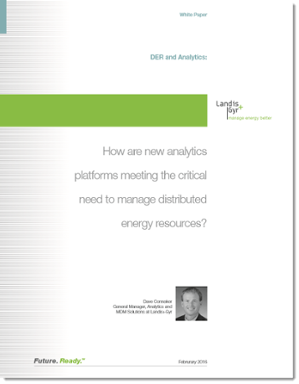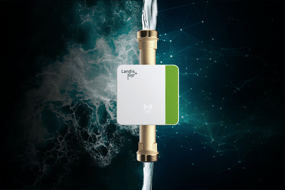Data management services and analytics are the key catalysts driving the Internet of Things innovations now being widely adopted by utilities to transform their operations and managerial capabilities.

In essence, collecting real-time energy consumption information from power plants, distribution networks and end consumers through connected devices over the Internet to monitor, track and share information when combined with business analytical software enhances understanding and responsiveness of the power delivery system. Intelligent grid devices such as smart meters and sensors are providing utility managers with real-time quality data that is essential to improving operational processes – most notably by increasing their ability to integrate renewable energy into their service delivery. Empowered by this information, utilities can respond more quickly to fluctuations in supply and demand, identify energy theft or faulty equipment and assess the operational health of the network.
Leveraging big data from utility systems
Data management and analytics systems such as Landis+Gyr’s Meter Data Management System (MDMS) or Advanced Grid Analytics (AGA) provide web-based visualization, prediction, simulation, and optimization analysis that enables utilities to improve insights into energy use and any disturbances in supply and demand such as outages or an incoming burst of renewable energy. Network connectivity models can either be imported through Geographic Information System (GIS) services or directly from planning tools, ensuring seamless integration between customer information and operational data in the utility environment. By leveraging data from advanced metering and other systems, utility professionals can extract business value from the analytical functionality which results in improved operational processes, increased efficiencies in resource utilization and a reduction in costs whilst improving the overall reliability of the power supply. The benefits of MDMS or AGA are quickly achievable and easily accessible by deploying these systems within the utility’s own infrastructure, hosted in the cloud or delivered as a service offering. With the fast advance of microgeneration and energy storage technologies, the role of distribution network analytics will only grow in importance.
Improving network operations and planning
At grid level, distribution management systems monitor circuit loading and aggregate data from a large number of intelligent devices such as smart meters, grid sensors and mobile devices being used by engineers in the field that need to be processed to enable operational and business decision making. Collecting and correlating multiple data sources allows organizations to gain insights that individual data alone does not provide. This exponential growth of data has made analytics essential for the energy industry and grid management, in particular. Thanks to grid analytics, network operators are now able to improve grid resilience through outage prevention planning, i.e., carrying out preventive maintenance and dispatching crews before there is an interruption to services. Furthermore, smart metering in combination with analytics can detect irregular or changing consumption patterns that could suggest energy loss. To track technical losses, operators can use analytics data from the distribution system that leverages data from Advanced Metering Infrastructure (AMI) systems with feeder-level usage information. Nontechnical losses are easier to quantify (energy delivered minus energy consumed) but they are more difficult to pinpoint without analytics that compares usage data from demographically similar premises, and analyzes changes in historical data for a single premise. Advanced asset management analytics provides comprehensive views of asset health that help utilities to extend their lifecycle, perform risk analyses and calculate the return on investment on potential repairs and upgrades. Analytics can also have a great impact on the the utility’s integration plan for renewable energies. It quantifies the potential load balancing and power quality issues that photovoltaics and other renewable energy sources will create for the circuits, as well as the amount and type of grid investments needed to support them.
Enhancing customer relations
On the consumer side of things, utilities are not just using smart meters to collect data for calculating household bills but as a demand response tool to support their marketing and pricing strategies – not only for revenue protection but also to enhance customer relations. The new intelligent networks have opened the door to the collection of real-time multiple sources of data flowing through the organization while software analytics greatly improve the capability of utility managers to advance grid operations, optimize distribution system and protect revenues.
Statistics
By 2017, 45% of utilities’ new investment in analytics will be used in operations and maintenance of plant and network infrastructure.17
The U.S. market for utility customer analytics software will surpass $1 billion by 2018 and $2 billion by 2023.18
17 IDC FutureScape: Worldwide Utilities 2015 Predictions by IDC Energy Insights
18 Customer Analytics at the Grid Edge: Market Landscape, Forecast and Key Trends by GTM Research 2015
Related resources
White Paper: DER and Analytics: How new analytics platforms meet a critical need
The rapid acceleration of Distributed Energy Resources (DER) presents a range of challenges for electric utility management. The good news is that a strategic approach, one that taps the power of data analytics, can meet the rising need to manage DER. Download the White Paper below to find out more!







